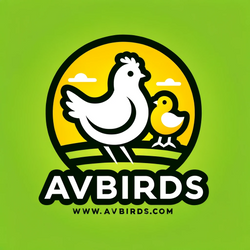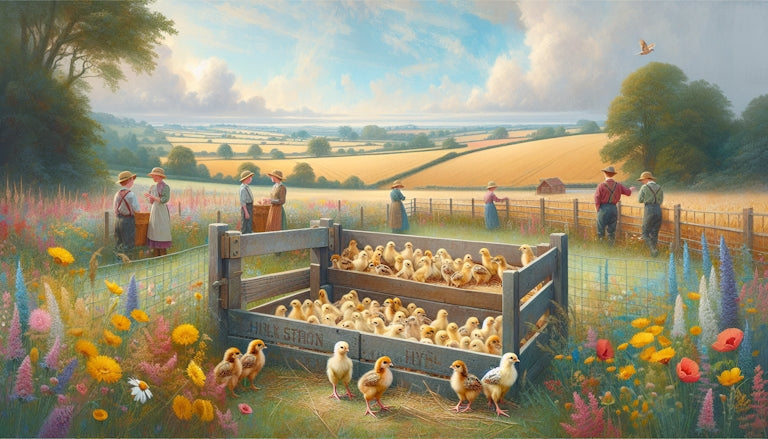Imagine stepping into your backyard one morning to find adorable, day-old pheasant chicks exploring their new home. If you’ve been browsing day-old chicks for sale, you’ve come to the right place. Searching for pheasant chicks for sale can feel overwhelming, but you’re about to get a clear roadmap—from pick to pen, feed to flight.
We’ll walk through why these colorful game birds make a fun addition to your homestead, where to source top-quality stock, how to set up a cozy brooder, feeding milestones, and your options for keeping or releasing adult pheasants. Let’s get started on your new backyard adventure.
Why Raise Pheasant Chicks
Pheasant chicks bring a burst of wild color and energy to your property. These birds grow fast, mature into striking adults, and even help control insects in fields or gardens. You’ll love watching them dart around like little fluff balls on legs, promise.
What’s the appeal beyond their looks and speed?
- Ornamental charm: Bright plumage adds a show-stopping look to any aviary
- Natural pest control: Pheasants forage on ticks, slugs, and grasshoppers
- Hunting heritage: Raise birds for sustainable release and upland sport
- Learning opportunity: Great for homeschooling or youth programs
- Conservation boost: Support breeders who focus on healthy genetics
Ornamental And Game Benefits
- Rings of color: Ringneck pheasants sport a distinctive white neck ring and copper breast
- Exhibition appeal: Manchurian and Lady Amherst’s breeds turn heads at avian fairs
- Rapid maturation: Expect full tail length by week 12, impressive for show setups
- Active foragers: They help reduce garden pests and mix with free-range flocks
Conservation And Education
Raising pheasants can support wildlife conservation and learning. By partnering with responsible hatcheries, you’ll:
- Promote healthy flocks through breeder selection programs (MacFarlane Pheasants)
- Offer local schools or 4-H clubs hands-on wildlife lessons
- Contribute to sustainable game bird populations where releases are permitted
Finding Quality Chicks
Choosing a reputable hatchery sets your flock up for success. Let’s break down top sources, breed options, and shipping must-haves so you can pick healthy, vigorous pheasant chicks.
Breed Varieties To Consider
Pheasants come in several eye-catching varieties. Consider these popular types:
- Ringneck Pheasant: Classic red eye patches and iridescent gold bodies
- Manchurian Pheasant: Slate-blue plumage with dramatic long tails
- Golden Pheasant: Bright yellow crests and crimson cloaks, a real stand-out
- Lady Amherst’s Pheasant: Bold white and crimson pattern, perfect for aviaries
Hatchery Comparison
MacFarlane Pheasants
- Minimum order: 10 chicks
- Live delivery guarantee on every order
- 90% sexing accuracy on popular breeds
- Health certificate fee: $16 for certain states, $115 for international orders (MacFarlane Pheasants)
Cackle Hatchery
- Ringneck chicks start at $2.98 each
- Minimum order: 35 chicks
- Missouri residents need a permit for shipping
- Delivery window: late March through early July (Cackle Hatchery)
Stromberg’s Chickens
- Emphasis on high-flying game birds for hunting
- Free shipping on orders over $150
- Mature weights: males up to 3.25 lbs, females up to 2.5 lbs
- Breeds suited for both heat and cooler climates (Stromberg’s Chickens)
Order Requirements And Shipping
Shipping live chicks requires extra planning. You’ll need:
- Proper crates that maintain stable temperatures
- Valid health certificates when crossing state or national lines
- Awareness of postal surcharges (USPS adds $15 per box from Jan 2025)
- Emails with ship date notifications so you can prepare your brooder space
Sexing And Vaccination Options
Choosing between pullets and straight-run chicks affects cost and care. Sexed pullets cost more but save time separating hens from roosters. Straight-run are mixed-sex and often cheaper but may leave you with extra cocks. Vaccinated chicks arrive with basic disease protection. Check vendor options if you want one less worry. Learn more about sexed pullets and vaccinated chicks.
Setting Up The Brooder
A snug brooder keeps your pheasant chicks warm, safe, and happy during their crucial first weeks. Think of it as their custom nursery.
Brooder House Essentials
- Weather-tight shelter free from drafts and rodents
- Smooth, easy-to-clean walls and floors
- Litter: chopped straw works best, pheasants tend to eat wood shavings
- Brooder paper or burlap under straw for quick swaps during cleaning (MacFarlane Pheasants)
Heat And Lighting
- One 250 W infrared bulb per 100 chicks, hung about 18 inches off the floor
- Use a ring or draft shield to concentrate warmth for days 1–7
- Watch chick spacing: tight clusters mean they’re cold, wide dispersal means too hot
Temperature And Humidity Guide
Maintaining the right environment helps prevent chill or heat stress. Aim for:
| Age (Weeks) | Brooder Temp (°F) | Humidity Level (%) |
|---|---|---|
| 1 | 95 | 50–60 |
| 2–3 | 90 | 50–55 |
| 4–5 | 85 | 45–50 |
| 6+ | Gradually reduce to ambient | 40–45 |
Use a thermometer and hygrometer to track conditions daily.
Sanitation Practices
Keeping things clean cuts down on disease and mortality. You can:
- Replace bedding every few days to control dampness and ammonia
- Disinfect feeders and waterers weekly with a mild bleach solution
- Install a footbath with non-toxic disinfectant at the brooder entrance
Feed And Water Setup
- Offer 30% protein medicated gamebird or turkey starter crumble until 6 weeks (MacFarlane Pheasants)
- Transition to 20% protein grower feed after 6 weeks, keep medication through maturity
- Provide waterers with narrow lips or add marbles to troughs to prevent drownings
- Elevate feeders slightly to reduce waste and contamination
Feeding And Growth
Tracking weight and behavior helps you catch issues early and celebrate progress. These birds grow fast—just check these milestones.
Week-by-Week Growth Milestones
- Hatch to 1 week: chicks measure ~7 cm and weigh ~18.5 g, fully mobile (Bird Fact)
- 2–3 weeks: legs lengthen, height ~7.6 cm, down gives way to juvenile feathers
- 6 weeks: nearly adult size, switch to grower feed, average weight ~541 g
- 12 weeks: plumage fills out, weight ~900 g, ready for outdoor life
Preventing Health Issues
Good management minimizes risks like coccidiosis and cannibalism. Keep an eye on:
- Ventilation: fresh air cuts down on respiratory problems
- Space: overcrowding stresses birds and sparks pecking
- Enrichment: sprinkle treats like lettuce or mealworms to distract stressed chicks
Introducing Treats And Grit
Once chicks reach 3 weeks old, you can offer small treats and grit. Grit helps with digestion as they sample new foods. Try:
- Crushed oyster shell or poultry grit, available at feed stores
- Occasional mealworms or finely chopped greens as enrichment
- Fresh herbs like parsley or oregano, which may support health
From Brooder To Aviary
Once chicks feather out, it’s time to expand their world. Moving them too soon or too late can stress your young flock.
Outdoor Pen Guidelines
- Build a pen with one-inch hole chicken wire to prevent escapes
- Include brush piles or low shrubs for shade and hiding spots
- Supervise first outdoor sessions, letting chicks explore in small batches
Protecting From Predators
- Secure ground-level fencing to block raccoons, foxes, and neighborhood dogs
- Install overhead netting or wires to guard against hawks
- Close pens at night or provide indoor shelter during bad weather
Recommended Space Per Bird
Adequate space keeps pheasants comfortable and reduces pecking. Plan for:
- Brooder: at least 1 square foot per chick up to 6 weeks
- Brooder-to-pen transition: 2–3 square feet per bird
- Adult aviary: 10–12 square feet per bird for free movement
Release Considerations
Thinking of letting pheasants go free? Aim for:
- At least 8 weeks of age to ensure full feather coverage and strength (Oakwood Game Farm)
- Good weather: mild temperatures and dry ground improve survival
- Thick cover: tall grasses or brush piles help birds hide from predators
Cost And Order Tips
Planning ahead helps you avoid sticker shock. Compare costs, factor extras, and line up your supplies.
Hidden Costs To Watch
- Feed bills can add up: chicks eat roughly two pounds of starter and grower feed in seven weeks
- Equipment costs: brooders, feeders, and waterers need initial investment
- Permit or inspection fees for interstate or international shipments
- Electricity for heat lamps, especially in cooler seasons
| Source | Min Order | Price/Chick | Shipping/Cert Fees |
|---|---|---|---|
| MacFarlane Pheasants | 10 | Varies by breed | $16 domestic, $115 intl |
| Cackle Hatchery | 35 | $2.98+ | Included with shipping |
| Stromberg’s Chickens | N/A | Varies | Free over $150, $15 extra |
Sample Order Checklist
- Verify permit requirements in your state
- Schedule shipments in spring or fall to avoid extreme temperatures
- Stock up on chick brooder supplies and chicken feeders and waterers early
- Confirm vendor’s sexing accuracy and vaccination options if you need specific pullets
Scoring Seasonal Deals
Buying chicks during peak hatch seasons can nab you discounts or bonus birds. Tips:
- Place orders early in spring before hatchery schedules fill up
- Join email lists of top hatcheries to catch flash sales
- Consider group buys with neighbors to meet minimum orders and share costs
Key Takeaways And Next Steps
- Pheasant chicks add wild color, natural pest control, and educational value to your yard
- Research breeds and hatcheries carefully to match your space, budget, and climate
- A well-prepared brooder with proper heat, bedding, and sanitation ensures strong, healthy chicks
- Track growth milestones, prevent common health issues, then move birds outdoors or release responsibly
- Factor in feed, equipment, and permit costs to keep surprises low
Ready to start? Head over to our breed selector to find your perfect pheasant variety, and share your first chick photos in the comments below!

